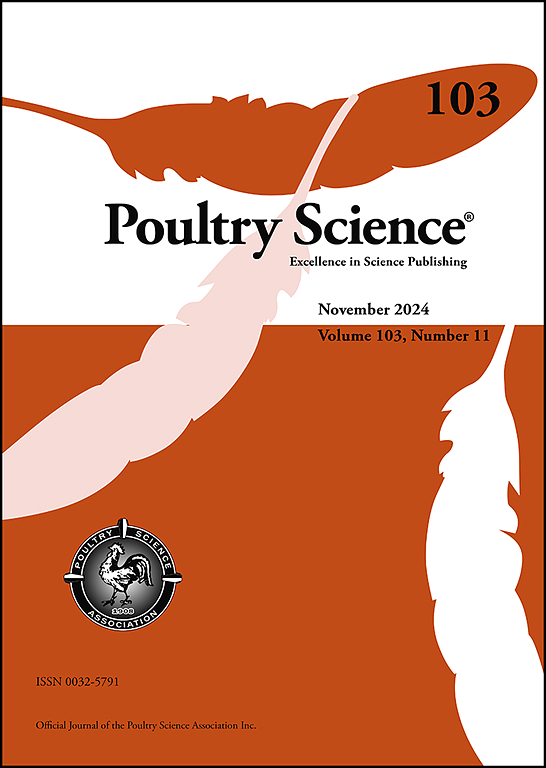Using a novel gene site to develop a duplex real-time TaqMan MGB probe PCR method for the SNP detection and differentiation between the MS-H live vaccine strain and wild-type Mycoplasma synoviae strains
IF 3.8
1区 农林科学
Q1 AGRICULTURE, DAIRY & ANIMAL SCIENCE
引用次数: 0
Abstract
Mycoplasma synoviae (MS) is a globally prevalent avian pathogen responsible for airsacculitis and synovitis. The temperature-sensitive (ts)+ vaccine strain MS-H, a live attenuated variant, is the most effective and widely used vaccine for controlling infections in the poultry industry. Consequently, accurate detection is essential for a strategy known as differentiating infected from vaccinated animals (DIVA). In this study, we developed a duplex real-time TaqMan minor groove binder (MGB) probe PCR (The DRTM-probe PCR) method to differentiate the MS-H live vaccine strain from wild-type strains by targeting a single nucleotide polymorphism (SNP) in the ktrB gene. This gene overcomes the restoration of the genotype of wild-type 86079/7NS in specific regions. With a detection limit of 6.25 copies/μL, the DRTM-probes PCR method demonstrates a good specificity in distinguishing in one hour. For simulated clinical samples, the method achieved over 95 % sequence identity with reference fragments, confirming its accuracy. The established DRTM-probe PCR method offers a specific, rapid, and reliable approach for SNP detection with significant application potential.
求助全文
约1分钟内获得全文
求助全文
来源期刊

Poultry Science
农林科学-奶制品与动物科学
CiteScore
7.60
自引率
15.90%
发文量
0
审稿时长
94 days
期刊介绍:
First self-published in 1921, Poultry Science is an internationally renowned monthly journal, known as the authoritative source for a broad range of poultry information and high-caliber research. The journal plays a pivotal role in the dissemination of preeminent poultry-related knowledge across all disciplines. As of January 2020, Poultry Science will become an Open Access journal with no subscription charges, meaning authors who publish here can make their research immediately, permanently, and freely accessible worldwide while retaining copyright to their work. Papers submitted for publication after October 1, 2019 will be published as Open Access papers.
An international journal, Poultry Science publishes original papers, research notes, symposium papers, and reviews of basic science as applied to poultry. This authoritative source of poultry information is consistently ranked by ISI Impact Factor as one of the top 10 agriculture, dairy and animal science journals to deliver high-caliber research. Currently it is the highest-ranked (by Impact Factor and Eigenfactor) journal dedicated to publishing poultry research. Subject areas include breeding, genetics, education, production, management, environment, health, behavior, welfare, immunology, molecular biology, metabolism, nutrition, physiology, reproduction, processing, and products.
 求助内容:
求助内容: 应助结果提醒方式:
应助结果提醒方式:


